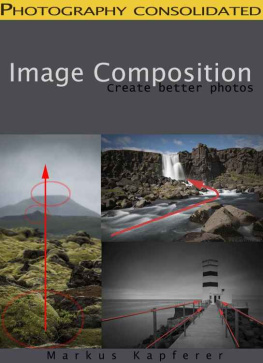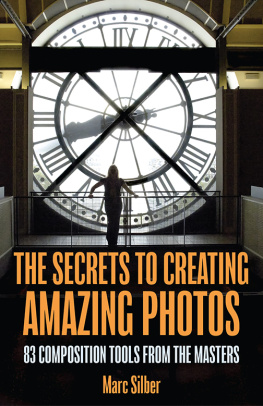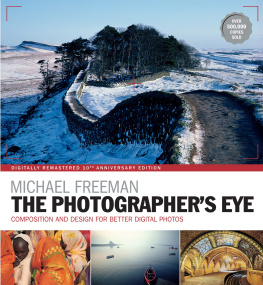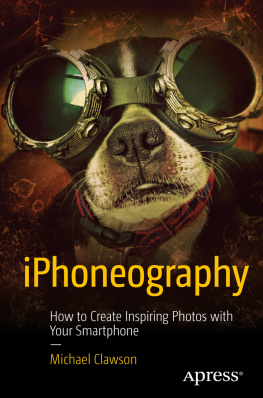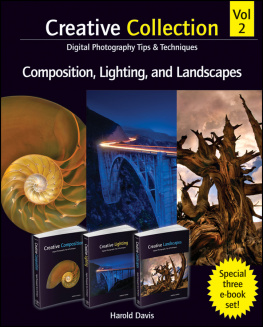Kapferer - Image Composition: Create Better Photos!
Here you can read online Kapferer - Image Composition: Create Better Photos! full text of the book (entire story) in english for free. Download pdf and epub, get meaning, cover and reviews about this ebook. year: 2013, genre: Computer. Description of the work, (preface) as well as reviews are available. Best literature library LitArk.com created for fans of good reading and offers a wide selection of genres:
Romance novel
Science fiction
Adventure
Detective
Science
History
Home and family
Prose
Art
Politics
Computer
Non-fiction
Religion
Business
Children
Humor
Choose a favorite category and find really read worthwhile books. Enjoy immersion in the world of imagination, feel the emotions of the characters or learn something new for yourself, make an fascinating discovery.
Image Composition: Create Better Photos!: summary, description and annotation
We offer to read an annotation, description, summary or preface (depends on what the author of the book "Image Composition: Create Better Photos!" wrote himself). If you haven't found the necessary information about the book — write in the comments, we will try to find it.
Kapferer: author's other books
Who wrote Image Composition: Create Better Photos!? Find out the surname, the name of the author of the book and a list of all author's works by series.
Image Composition: Create Better Photos! — read online for free the complete book (whole text) full work
Below is the text of the book, divided by pages. System saving the place of the last page read, allows you to conveniently read the book "Image Composition: Create Better Photos!" online for free, without having to search again every time where you left off. Put a bookmark, and you can go to the page where you finished reading at any time.
Font size:
Interval:
Bookmark:
Table of contents:
Intro
Going through the world with open eyes
Create dynamic images
Golden ratio
Leading lines
Cropping images
Visual weight
Frames
Arranging image elements
Symmetry
Grouping objects
Light & shadow
Shooting position
Depth of focus
Colors
Color theory
Color psychology, color effect
Color harmony
Complimentary colors
Simultaneous contrast
Light-dark contrast
Saturation contrast
Horizon
Foreground & background
Reduction
Telling stories
Checklist
Afterword
Intro
After the successful launch of my first book Long Exposure Photography - Photography compact Id like to continue the series with this book. Id like to offer you a source of inspiration with this book. The compiling of various methods of photographing an object should, on the one hand, make it easier to break out of the standard rut and try out new image composition options. On the other hand this book should be an aid for difficult photography situations. Whenever you are standing in the wilderness looking for the perfect image composition, the following pages should serve as a source of inspiration for you.
You probably already automatically consider many of the following composition pointers, but it is important to consciously apply these tips with a clear goal in mind. Only then can you develop a vision of the finished image beforehand and then choose a composition that will arouse the desired emotions in the viewer. For me it is exactly at this point where photography begins and snapping a picture ends. When taking the shot, think about which statement you want to make with it, which emotions should be aroused and then deliberately guide the viewers perspective with a corresponding image composition.
However Id like to emphasize up front, that there is no obligation to use specific rules. These pointers should be seen as a suggestion and not as absolutely necessary ground rules. Break these rules as often as you like. However you should be aware that you are acting contrary to the usual conventions and which affects you achieve by doing so.
For everyone that doesnt know me from my first book, Id like to write a couple sentences about myself. I have to disappoint anyone who expected an author with many years of experience as a professional photographer. As a trained media professional for media design, commonly called a modern graphic designer, I enjoyed a similar education and so can contribute a significant amount of experience with image composition from my graphic training. I learned design theory from the bottom up, not just in relation to photography but also as an overriding graphic point of view. I acquired my photography skills through hard work in the course of pursuing my hobbies intensely for many years, so that now I can also call myself an experienced photographer.

Going through the world with open eyes
This probably sounds strange but my first tip is: Go through the world with your eyes open. Look for interesting subjects as often as possible, even when youre not currently shooting pictures, for example on the way to work every day, during a weekend stroll, or during an evening concert. Interesting subjects can be found everywhere. In this way the eye and the feeling for photo composition can really be learned. I, for example, pay attention to interesting light situations, to distinctive lines and shapes, or also to patterns. If I find something that is interesting to me, I consider as the next step from where the subject could best be photographed and which detail of the image would be optimal.
Try it yourself sometime. It isnt important whether you capture your discovery in a photograph, or whether you only run through it in your mind. In any case it is good practice and you will find many interesting subjects.
Create dynamic images
In photography the term dynamic range is also used as a synonym for contrast range. In this book though the term dynamic is only meant as interesting or exciting in terms of image impact. Often the difference between an exciting and a boring image is very slight. Small adjustments to the image detail or to the position the picture is taken from can have a very large effect. In general the main concern with image composition is to purposefully direct the view of the observer and with the appropriate image segmentation to deliberately generate excitement or avoid it, if a calm, well-balanced image impact is the aim.
Golden ratio / Rule of thirds
One of the elemental design rules that you have probably already heard of involves the golden ratio, also known as the simple rule of thirds. In general these terms represent tools for the theoretical, optimal image composition and state that a proportion of 1:2 appears more interesting than a proportion of 1:1.
Imagine a grid made up of 3 equally sized lines and columns and lay it over the image. If the subject is placed on an intersection point or on the lines, this seems more interesting than if it were centered. It isnt important to hit the intersections or the lines exactly. It is much more about paying attention to this division in general.

Dividing the image area into thirds makes for an exciting and dynamic distribution of the image. If for example the subject is centered in the image, the picture seems static and boring in comparison. In the following example and in the above images I prefer the left alternative in each case in which the subject is placed outside of the center on the intersection of the guidelines.

Leading lines
Leading lines can make a shot seem very interesting and lead the viewers gaze into the photo towards the main object. Suitable lines that can serve as leading lines are often found in nature (rivers, a fallen tree trunk, etc.) as well as in man-made structures (streets, handrails, etc.) and by choosing an appropriate perspective can be nicely integrated into the image composition.
In the following example I integrated the jetty, including the railing, into the image composition. The handrail leads the eye to the lighthouse, which in turn was positioned in the image according to the rule of thirds.

Leading lines dont always have to be straight either. There are a number of possibilities here, for example an arch in a coastline or a street in an s-form that leads to the main subject. In the following shot I correspondingly integrated the stream in the foreground into the composition of the image. In turn the observers eye is led by the run of the stream to the main subject, the waterfall.

Cropping images
There are several options when choosing the image area. Sometimes a very tight focus is good and in other situations you should leave some room between the edge of the photo and the subject.
But before you think about the image area, you should consider what kind of impact you would like to achieve with the image. For example with a landscape photo in which the vastness of the landscape should be revealed, the use of a strong panorama format presents itself. Plan this when you are taking the photo and allow for the possibility that a part of the top and bottom ends will be cropped. In contrast a very narrow image section often shows portraits and architectural photos to better advantage.
Font size:
Interval:
Bookmark:
Similar books «Image Composition: Create Better Photos!»
Look at similar books to Image Composition: Create Better Photos!. We have selected literature similar in name and meaning in the hope of providing readers with more options to find new, interesting, not yet read works.
Discussion, reviews of the book Image Composition: Create Better Photos! and just readers' own opinions. Leave your comments, write what you think about the work, its meaning or the main characters. Specify what exactly you liked and what you didn't like, and why you think so.

